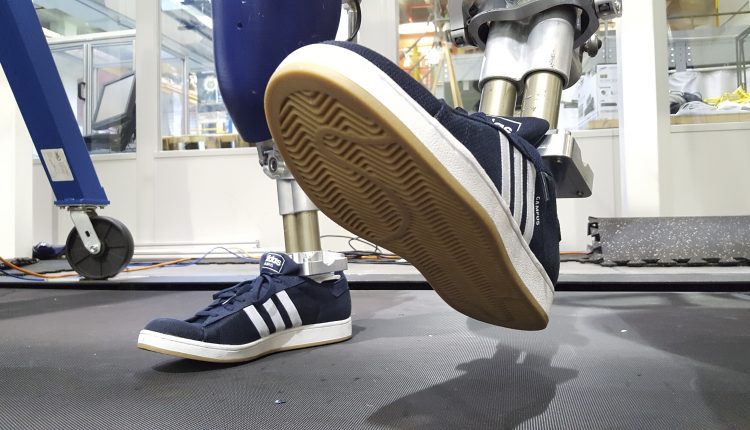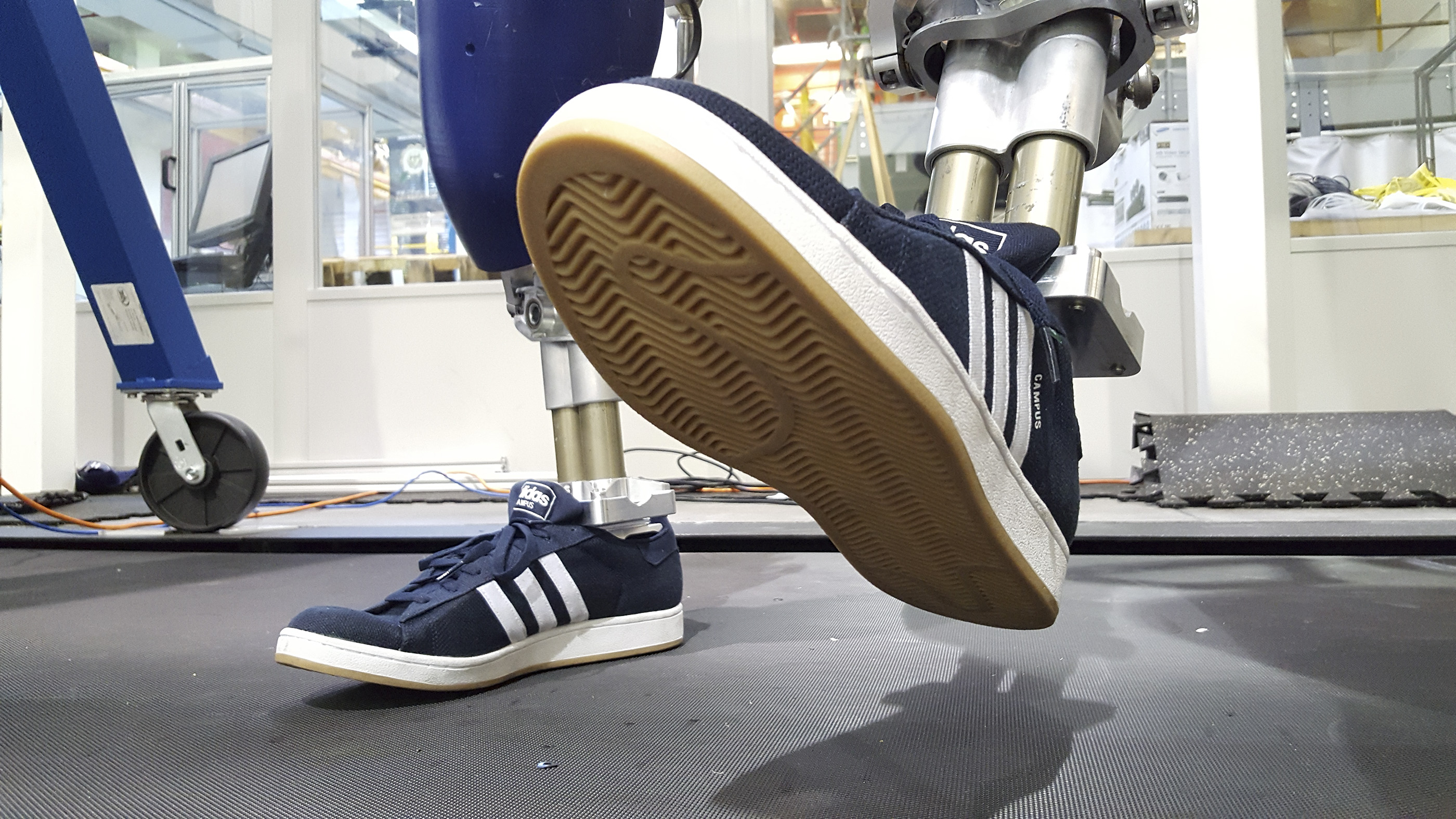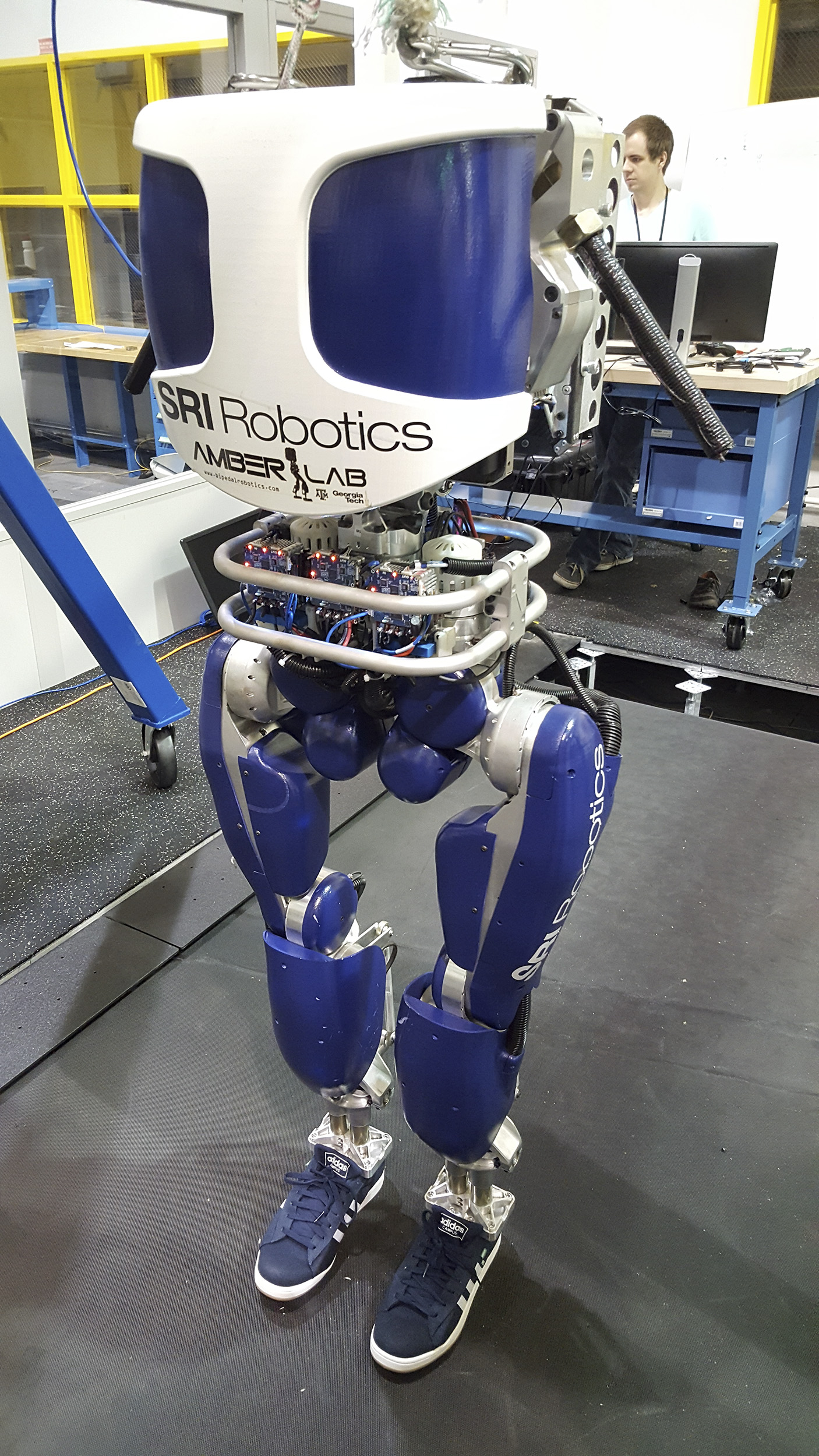
Humanoid robots are now walking around just like humans — and even wearing our sneakers.
A team of engineers from the Georgia Institute of Technology has created what it calls the most efficient-walking humanoid ever created.

Most robots these days are hunched at the waist and walk around flat-footed, but Georgia Tech’s DURUS robot is strolling around like a person. The robot’s legs and chest are elongated and upright. While walking, it lands on the heel of its foot, rolls through the step and pushes off its toe.
In the video below you can see it is even sporting a pair of size 13 sneakers as it walks under its own power on a treadmill.
“Our robot is able to take much longer, faster steps than its flat-footed counterparts because it’s replicating human locomotion,” said Aaron Ames, director of the Georgia Tech lab and a professor in the George W. Woodruff School of Mechanical Engineering and School of Electrical and Computer Engineering. “Multi-contact foot behavior also allows it to be more dynamic, pushing us closer to our goal of allowing the robot to walk outside in the real world.”
Previous approaches to tackling the humanoid robot walk included simple algorithms that would move the top of the machine forward while keeping its feet flat and grounded. So, as it would shuffle along, the robot’s waist would stay at a constant height and create a hunched look. This tactic would prevent robots from efficiently propelling themselves forward.
Up until just a week ago, DURUS was walking flat-footed, even though it was powered by different algorithms than most robots. That’s when the researchers decided to build a pair of metal feet with arched soles. They applied their complex mathematical formulas, but watched DURUS misstep and fall for three days. After changed made to the algorithms the robot was finally walking on its own two feet with the heel-strike and toe push-off that is key to the human style of walking.

The robot is equipped with springs between its ankles and feet, that mimic tendons in humans, that allow it to walk with a gait that stores mechanical energy from a heel strike to be later reclaimed as the foot lifts off the ground.
This natural gait makes DURUS very efficient. According to Georgia Tech, robot locomotion efficiency is measured by a “cost of transport,” or the amount of power it uses divided by the machine’s weight and walking speed. Ames says the best humanoids rank at approximately 3.0 and DURUS’ cost of transport is 1.4, all while being self-powered.
“Flat-footed robots demonstrated that walking was possible,” said Ames. “But they’re a starting point, like a propeller-powered airplane. It gets the job done, but it’s not a jet engine. We want to build something better, something that can walk up and down stairs or run across a field.”
These advances may pave the way for future robotic assistive devices like prostheses and exoskeletons that can enable the mobility-impaired to walk with ease.

Comments are closed, but trackbacks and pingbacks are open.